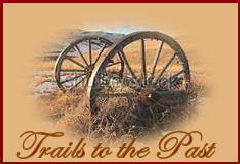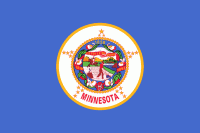|
Trails to the Past would appreciate any genealogy information that you may have such as news items, wills, deaths, births, biographies etc. if you have any of these items they can be emailed to Marie Miller the state of Minnesota Adminstrator
The county seat and namesake of the county is the City of Anoka, which is derived from the Dakota word anokatanhan meaning "on (or from) both sides," referring to its location on the banks of the Rum River. The largest city in the county is the City of Blaine, the thirteenth-largest city in Minnesota and the eighth-largest Twin Cities suburb.
The Rum River cuts through the county and was the site of many early European settlements. It was a common route to the Mille Lacs Lake, the spiritual homeland of the Mdewakanton Dakota (Sioux). The river was traveled under captivity by Father Louis Hennepin in his first exploration of the region. The area became a center of fur trade and logging as French and French Canadian communities grew in the cities of Anoka and Centerville. Organized in 1857, the county's southern border eventually met Minneapolis and has become a predominantly suburban area following the construction of Interstate 35W.
Anoka County was organized by an act of the territorial Legislature on May 23, 1857, the year prior to Minnesota's admission to the Union. It was formed from parts of Ramsey County and Benton County; the Rum River previously divided the line between the two counties. The boundaries were mainly the same as they are now, except for a small part of the southeastern tip along the Mississippi River and at the south, formerly known as Manomin County. It was a small portion that connected to Ramsey and occupied one-third of the congressional township. It was then attached to Anoka County by constitutional amendment November 2, 1869. It later became known as Fridley in 1879.
The first white men to explore what is now Anoka County were the Franciscan friar Louis Hennepin and two others in his party. Not soon after, fur traders began to settle in the area which is now Ramsey County. They settled on the Rum River and more people were attracted to the area. A community was created which is now called Anoka.
The information
on Trails to the Past © Copyright may be used in personal family history research, with source citation. The pages in entirety may not be duplicated for publication in any fashion without the permission of the owner. Commercial use of any material on this site is not permitted. Please respect the wishes of those who have contributed their time and efforts to make this free site possible.~Thank you!cated for publication in any |



